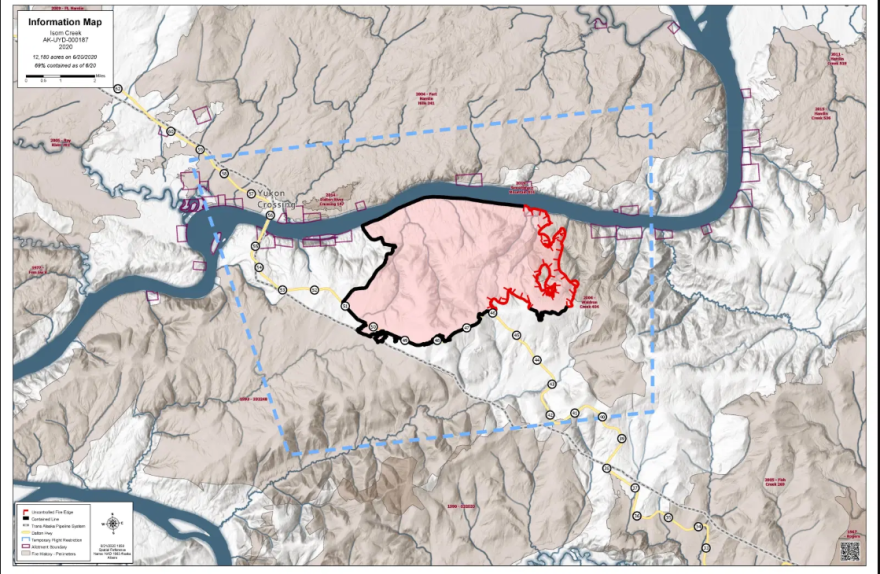Cool, rainy weather has kept this year’s fire season fairly quiet. And as the midpoint of this year’s fire season approaches, state and federal firefighting officials anticipate that weather pattern is likely to continue. Which means they’ll probably soon be sending back firefighters and equipment that’ve been on loan from agencies in the Lower 48.
Firefighters call July 10th the annual “conversion date,” when agency officials decide whether to return personnel and equipment that’ve been loaned by firefighting agencies in the Lower 48. And whether to cut back on resources assigned to fires burning in remote areas around Alaska. But because the weather here has turned cool and rainy, the federal Alaska Fire Service has already returned most of those borrowed resources.
“We had 235 people come up from the Lower 48. And that included nine firefighting crews, 35 smokejumper boosters. They have all left,” said Beth Ipsen, an AFS spokesperson.
Ipsen says the agency kept two air-retardant tankers and four smaller water-scooping planes, along with helicopters and its own aircraft. State Forestry Division spokesperson Tim Mowry says his agency is studying whether it can spare resources if firefighting agencies in the Lower 48 ask for help.
“We’ll evaluate what fires we currently have on the landscape, where we’re at in the fire season, and what things look like using fire-forecasting models, weather-forecasting models,” he said
Mowry says there aren’t many wildfires burning down in the states right now, so there’s not a lot of demand yet for additional firefighting resources. And both he and Ipsen say their agencies’ weather experts think the cooler-than-normal conditions that’ve dampened the wildfire season in much of Alaska is likely persist through the rest of the summer.
“The meteorologist said this morning that she doesn’t anticipate that there’s going to be some prolonger hot and drying (weather),” Ipsen said in an interview Tuesday.
Mowry, also interviewed Tuesday, added: “At this point, we’re not seeing a big change in the pattern.”
Ipsen says last week’s rainfall in the eastern Interior saturated vegetation and other wildfire fuels. And Mowry says that’s why some fires in the region haven’t burned more acreage.
“Most of those fires have not grown dramatically,” he said, “and that’s just an indicator of how wet those deeper fuels are.”

Ipsen says the exception is in the Upper Yukon, north of Fairbanks.
“That Upper Yukon Valley – it’s still hot and dry,” she said, “and our season up there is going to continue, while it may not in other places in the state.”
The dry vegetation and other fuels have fed the growth of a new wildfire in the Upper Yukon – the Sheenjek River Fire, which grew quickly rapidly after it was discovered June 23rd burning in an area about 37 miles east of Venetie in the Yukon Delta National Wildlife Refuge. It’s one of many wildfires in the area sparked by recent lightning.
“We had about 3,000 new strikes a day,” Ipsen said, “and at one point I think we had 20 new starts over two days.”
Most of those fires are burning in remote, low-priority areas, and the Alaska Fire Service and is monitoring most of them. And both AFS and Forestry are monitoring several wildfires burning around the western and southwestern parts of the state. Ipsen says the firefighting agencies take those ongoing fires into account in their conversion date deliberations. And so should the public.
“Fire season isn’t over,” she said. “People still need to be diligent and just be aware that even though we’ve had quite a bit of rain, they can still start a fire.”
Both Mowry and Ipsen say if their agencies do decide to send firefighters and equipment to the states, they’ll keep enough here to protect Alaskans from wildfires.



